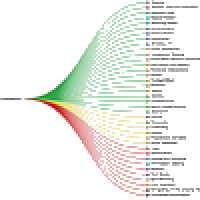Exploring the Relation between the Theory of Multiple Intelligences and Games For the Purpose of Player-Centred Game Design

A large body of research work demonstrates the importance and effectiveness of adapting a learning game to its players. This process is driven by understanding the differences between individuals in terms of abilities and preferences. One of the rather interesting but least explored approaches for understanding individual differences among learners is Gardner’s theory of Multiple Intelligences (MI). Gardner suggests that people exhibit multiple dimensions of intelligence or
abilities. In the literature, it is suggested that people with different types of intellectual strengths (intelligences) often exhibit clear preferences toward specific modalities and types of interaction and content in relation to learning. This raises the question whether this knowledge could be transferred and employed in adapting learning games to players, more in particular for the purpose of improving the game and/or learning experience, as well as the learning outcome of the players. Although various claims regarding the existence of a relationship between MI and games have been made, none of them are substantiated with empirical evidence.
This paper presents the results of an empirical study that has led to evidence based mappings between the different dimensions of intelligences proposed in MI and the fundamental building blocks of games, i.e. game mechanics. These
mappings indicate which game mechanics suit which MI dimensions, and can therefore act as design guidelines when designing games targeting people exhibiting dominance for specific MI dimensions. A tool that visualizes these mappings and facilitates their use in the design of such player-centred (learning) games is also presented.
abilities. In the literature, it is suggested that people with different types of intellectual strengths (intelligences) often exhibit clear preferences toward specific modalities and types of interaction and content in relation to learning. This raises the question whether this knowledge could be transferred and employed in adapting learning games to players, more in particular for the purpose of improving the game and/or learning experience, as well as the learning outcome of the players. Although various claims regarding the existence of a relationship between MI and games have been made, none of them are substantiated with empirical evidence.
This paper presents the results of an empirical study that has led to evidence based mappings between the different dimensions of intelligences proposed in MI and the fundamental building blocks of games, i.e. game mechanics. These
mappings indicate which game mechanics suit which MI dimensions, and can therefore act as design guidelines when designing games targeting people exhibiting dominance for specific MI dimensions. A tool that visualizes these mappings and facilitates their use in the design of such player-centred (learning) games is also presented.
Publication Reference
Sajjadi P, Vlieghe J and De Troyer O, “Exploring the Relation between the Theory of Multiple Intelligences and Games For the Purpose of Player-Centred Game Design” The Electronic Journal of e-Learning Volume 15 Issue 4 2017, (pp320-334) available online at www.ejel.org



